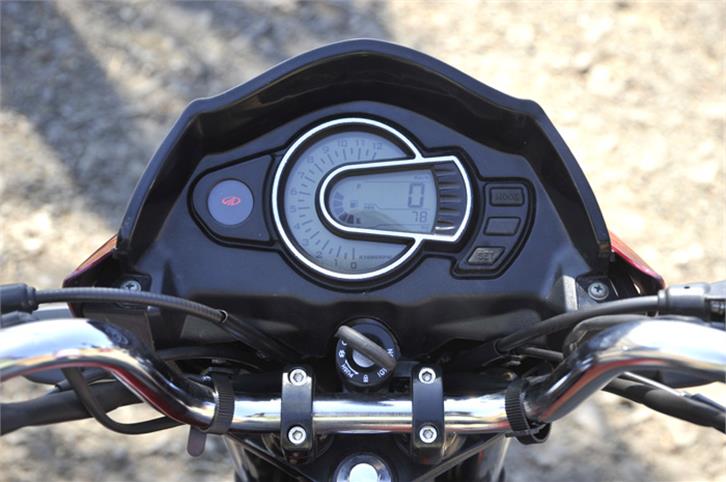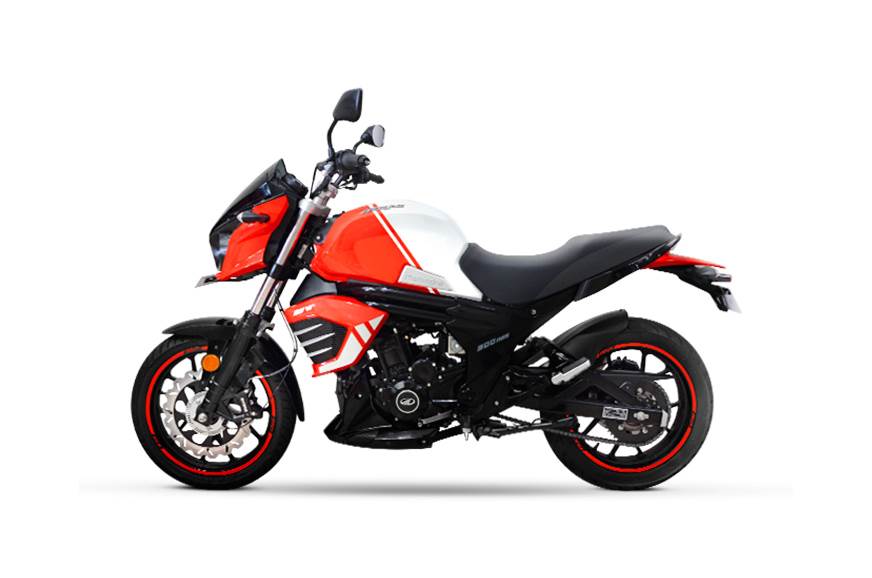Mahindra unveils 110cc Pantero and Centuro bikes. We get astride.
It’s been two years since Mahindra 2-wheelers launched its first motorcycle, the Stallio, late in 2010; a commuter bike that didn’t quite enthuse India’s demanding and fast-evolving two-wheeler market. Mahindra has taken things in the right spirit though, investing wisely to build an independent R&D facility and bringing its think tank together to improve the bike. Back with a bang, the Stallio has now been reborn as the Pantero, and Mahindra 2-wheelers has drawn on its substantial resource pool to perfect this 110cc motorcycle before diving back in.
Mahindra 2-wheelers tells us the Pantero is a completely new motorcycle, and they have also introduced another model, the Centuro, built around the same platform. For the enthusiasts, there’s news that the single-cylinder, 292cc Mojo remains under development, and is, for the moment, an unspecified while away from production.
The Pantero and Centuro are both 106.7cc commuter bikes, housing single headlamp units, with LED pilot lamps encased within individual bikini fairings. The Pantero looks identical to the erstwhile Stallio, using saffron-backlit digital instruments, including a digital tachometer, tucked beneath its tinted visor. The Centuro is positioned slightly higher in the market, a relatively feature-rich bike built around the same platform. The Centuro comes equipped with a handsome digital instrument console that uses white backlighting, and provides a ‘service due’ reminder, an economy and power riding mode indicator, a trip counter, odometer and clock. Furthermore, it also gets a novel theft deterrent system. The Centuro uses a smart-looking, LED torch-equipped, flip-to-open key. This key houses a 128-bit secure access chip that triggers an alarm whenever a duplicate key intrudes, and also cancels the ignition to immobilise the bike. Another button on this smart key makes the Centuro lights blink, making it easy to locate the bike in a crowded parking lot.
The relatively basic Pantero comes with decent quality palm grips, and switchgear that includes a pass-light flasher, plus a handlebar-mounted choke lever. Additionally, the Pantero shows off a lockable tool bay. Both bikes come equipped with handsome, five-spoke, 18-inch alloy wheels, while their engine bays and other lower parts sport an all-black finish, including the exhaust, which is fitted with a chrome heat guard.
Both bikes house the Stallio’s familiar, but extensively reworked and improved, four-stroke, 106.7cc, single-cylinder, air-cooled engine. It now generates a healthier 8.4bhp at 7500rpm, with peak torque close to the earlier 0.87kgm at 5500rpm. The new powerplant, now rechristened the ‘MCI-5’ – short for Micro Chip Ignited, 5-curves, retains common bore and stroke dimensions with the Stallio. Mahindra 2-wheeler R&D chief, PS Ashok informs us that minor tweaks to the engine’s state of tune separate the two motorcycles. The Pantero and Centuro bring to the table (now industry-standard) friction-killing roller bearings for their rocker arms, a redesigned piston assembly, improved induction and a better lubrication system. Both bikes come with identical, four-speed, four-up shifting gearboxes. Throttle response is better than on the Stallio at low engine speeds, a key factor on commuter bikes like these, but our ride was brief, so we must reserve our verdict till after strapping on our test equipment. What’s immediately apparent, however, is that the Pantero gearbox is a solid improvement over the Stallio, a giant step forward. Properly spaced gear ratios and lighter clutch feel at the control lever are also part of the improvements, all of which were missing from the first motorcycle.
Mahindra has undoubtedly improved upon the earlier engine and claims the new Pantero is capable of 0-60kph in 8.8 seconds, although we look forward to our independent testing to clarify this.
The Pantero and Centuro deploy twin downtube steel frames, a marginal 1.87kg lighter than the Stallio’s, with telescopic fork front suspension and a set of adjustable rear shocks. It’s disappointing to note that the rear suspension is still bolted to an obsolete, tubular steel swingarm, which few Indian motorcycles continue to deploy today.
The Pantero and Centuro’s upright riding positions feel just right for bikes built for city commuting, and are complimented by long, well-padded riding saddles that aid comfort. The Pantero uses alloy steering braces and ride quality is decent, with some room for improvement. Both new Mahindra bikes use MRF tyres, marking another big improvement, with grip levels now adequate for this segment. Stopping power is via 130mm drum brakes front and rear, with a disc brake currently not an option.
The Mahindra Pantero is priced at Rs 44,190 (ex-showroom, Chennai). Look out for our detailed ride report in the upcoming Autocar India February 2013 issue.







 Dimensions & Chassis
Dimensions & Chassis Engine
Engine Transmission
Transmission Efficiency
Efficiency Body
Body Suspension
Suspension Brakes
Brakes
Comments
Member Login
Personal Details
No comments yet. Be the first to comment.